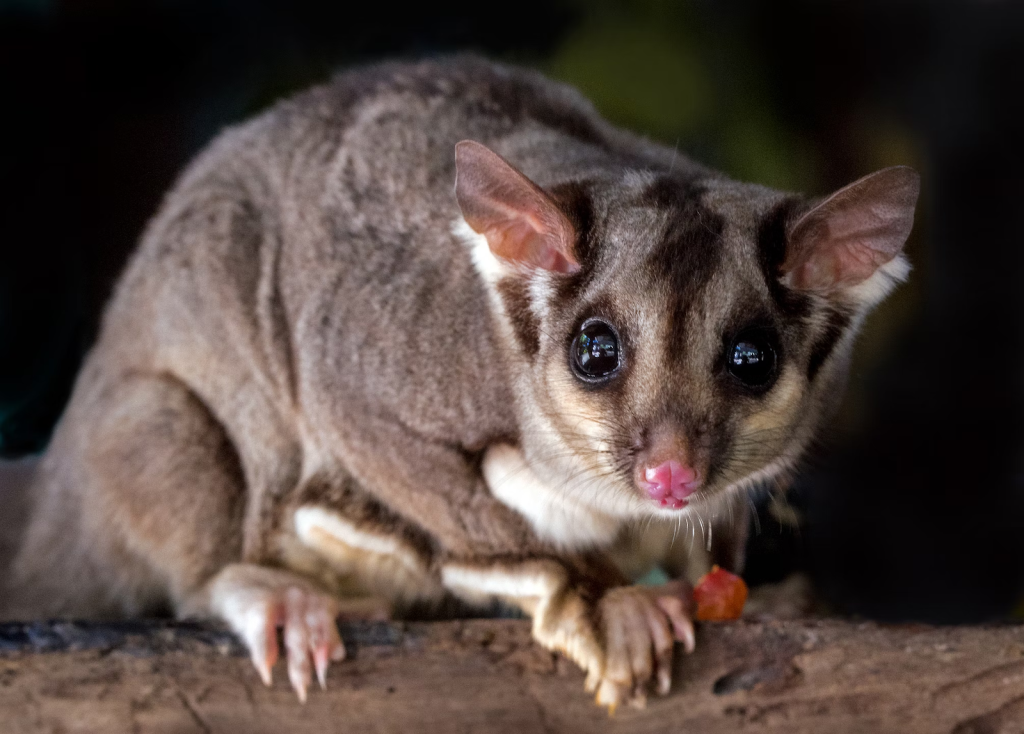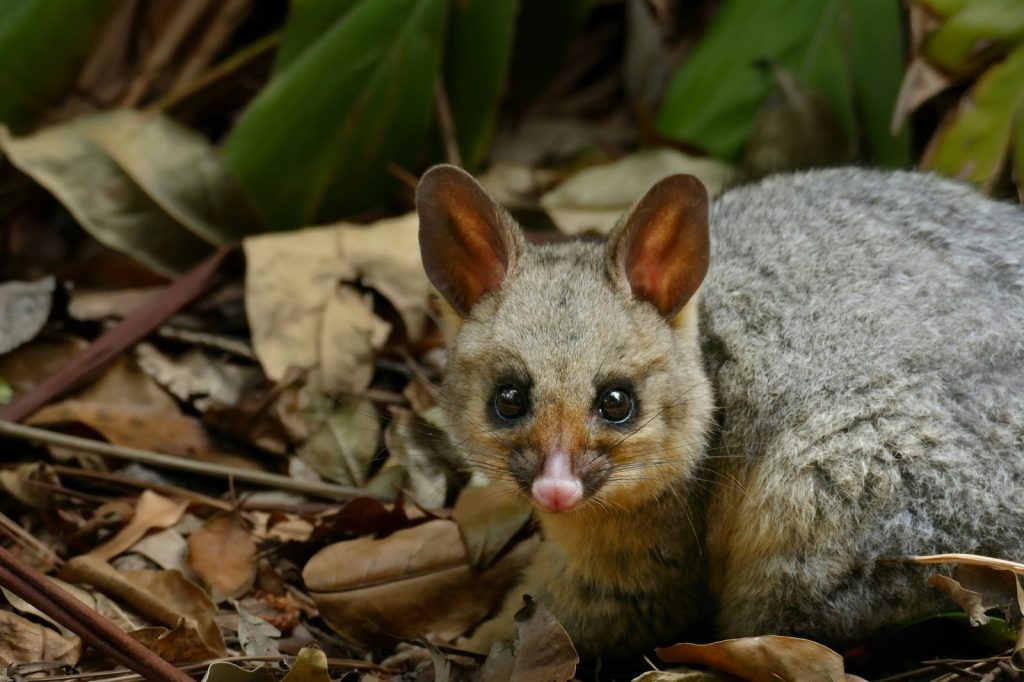Have you spotted a possum recently? Chances are, this native Australian animal has found its way into your home or garden. While possums may appear cute, they can quickly become uninvited guests, causing problems like plant damage and those unsettling nocturnal noises coming from your roof.
We know how frustrating it can be to deal with a possum invasion, which is why we’ve provided a comprehensive guide on how to handle these creatures effectively. At CPR Pest Control, we only offer humane treatments, ensuring you’re legally compliant while managing the possum problem on your property.
Our experts are here to help you remove possums safely and efficiently, so you can get back to enjoying your space.
What is a Possum?
Possums are an iconic part of Australia’s native wildlife. These small marsupials primarily feed on insects, snails, and fruits, which often draws them to abundant food, water, and shelter sources around your home.
They are typically cat-sized, with large pointed ears, dark eyes, and a pink nose. It’s important to note that possums are not the same as “Opossums,” which are a different species native to North and South America.
Possums are nocturnal, meaning they’re active at night. This makes it challenging to spot them during the day. However, their presence should not be ignored, as a possum infestation can escalate quickly if not handled.
Here are some potential consequences of leaving a possum issue unchecked:
- Strong Odours: Possums can produce a pungent smell that is difficult to eliminate.
- Property Damage: From chewing on electrical wires to tearing up insulation, possums can wreak havoc on your home.
- Droppings: Dark brown droppings left around your property can be a clear sign of their presence.
Australian Wildlife Removal Laws
In Australia, possums are protected under wildlife laws, making them a “Protected Species.” Each state has its own set of regulations for dealing with possums. In New South Wales, for example, the Biodiversity Act 2016 mandates that capturing a possum without the proper licence is illegal. This applies to both residential and commercial properties.
Possum handlers must be licensed professionals. They are required to conduct removals according to the Department of Planning and Environment Possum Management Policy.
What are the policies for a Possum Removal?
The policy dictates that a possum handler must follow catch-and-release guidelines to ensure the possum’s survival after relocation. When captured, the possum must be relocated to a climbable structure on the property, such as a tree, and only after sunset, as possums are nocturnal creatures.
Relocating the possum too far from the property puts its survival at risk since possums are territorial animals. The aim is to release them in a place where they can easily return and find shelter.

Commercial Operator VS Landholder License
If you’re dealing with a possum issue, hiring a licensed commercial operator is the best option. These operators hold the required licences to capture and relocate possums legally. Commercial operators must apply for a licence each year, and their staff can work under the licence.
Alternatively, if you want to manage the removal yourself, you must apply for a licence through the local National Parks and Wildlife office. Approval varies based on the situation, and it’s important to follow all legal requirements to avoid potential penalties.
Handling a possum without a licence can result in substantial fines, which is why we recommend working with experts like CPR Pest Control to ensure you’re legally compliant.
What are Non-Harmful Possum Repellents?
To humanely remove possums, natural repellents can be an effective solution. Here are some non-harmful options to help move possums away from your property:
Mothballs for Possums
Mothballs release a strong smell that possums dislike. Place them near known possum paths or entry points. However, use them carefully as they can pose a health hazard.
Ammonia possum repellent
Soak cotton balls in ammonia and place them in areas where possums frequent. The strong scent can deter them.
DIY Garlic remedy
Crush garlic cloves and place them in areas where possums might enter, such as gaps in the walls or floors. The pungent scent helps keep them at bay.
Sounds as a Possum Deterrent
Since possums are protected by law, traditional pest control methods like traps are not an option. Instead, use ultrasonic devices that emit high-frequency noises to deter possums.
Preventative Measures for Possum Control
While repellents are helpful, consistent property maintenance is key to preventing possums from settling in. Here are some steps you can take to reduce the likelihood of a possum invasion:
See some steps to take below:
- Secure Food Sources: Ensure food, especially pet food, is securely stored in tight containers. Check that your garbage bins have tight-fitting lids.
- Water Control: Repair any leaky taps or open containers that might provide a water source for possums.
- Remove Shelter Opportunities: Keep your garden tidy, trim tree branches that could provide roof access, and seal any entry points to basements or attics.

Dealing with Possums in Different Areas
Where the possum is located will influence how it is removed. For example, a possum problem in your garden requires different treatment compared to a possum infestation in your roof.
Once you’ve located where the possums are, you can plan your deterrent methods accordingly. Let CPR Pest Control know the specific areas where the possums are hiding to simplify the removal process.
Possums in the Garden
Possums love to hide in gardens, using trees and bushes for shelter while feasting on plants, snails, and insects. Protecting your garden is crucial to preventing damage.
Here are some tips to deter possums in your garden:
- Plant Deterrents: Possums dislike plants like mint, chrysanthemums, and geraniums, which release a strong scent they can’t tolerate.
- Physical Barriers: Use netting or cages to protect vulnerable plants, especially seedlings and fruit trees.
- Motion-Activated Sprinklers: Possums are skittish creatures. The sudden activation of a sprinkler system will startle and deter them.
Possums in the Roof
Possums are drawn to the dark, empty spaces in roofs and attics, which mimic their natural habitat of tree hollows. Here’s how to protect your roof:
- Inspect and Seal: Check your attic or roof cavity for any entry points. Look for small holes, scratches, or chew marks. Seal any gaps with solid sheeting, and use timber for larger openings.
- Provide Alternatives: Installing a possum box in your garden can offer an alternative shelter, encouraging them to leave your roof.
When to Call a Professional Pest Controller
If the possum problem persists despite your efforts, it’s time to call in a professional pest controller. Only licensed professionals can handle possums according to Australian law, capturing them humanely and relocating them safely.
A pest expert will provide tailored solutions and maintenance advice, ensuring your property remains possum-free. It’s a more cost-effective long-term solution, protecting both your home and garden from extensive damage.
The CPR Pest Control Difference
Looking to get rid of possums for good? Our team at CPR Pest Control has years of experience in handling possum infestations, from minor to larger-scale problems. We provide expert pest control management, ensuring a possum-free space for you and your family.
When you choose us, you’re choosing a pest control partner you can trust. We take the time to understand your unique needs, offering clear communication from start to finish.
Contact CPR Pest Control for all your possum control needs today!

